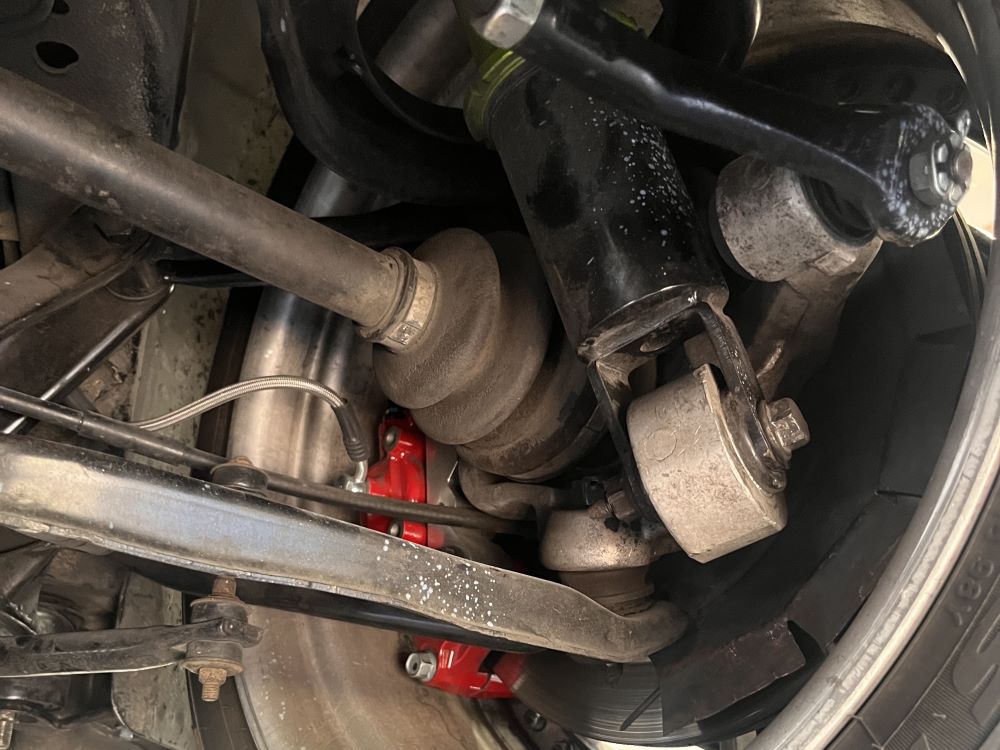Introduction
Every vehicle owner dreams of having the perfect ride—one that combines aesthetics, performance, and functionality. If you’re someone who loves off-roading or simply wants to give your vehicle a more aggressive stance, lift kits are the way to go. This article will guide you through the complexities of Lift Kit Installation Made Easy: Transform Your Vehicle with Springs Brake and Suspension. We’ll delve into various aspects such as benefits, types of lift kits, installation processes, and maintenance tips. By the end of this guide, you'll have a comprehensive understanding of what it takes to elevate your vehicle.
What is a Lift Kit?
Understanding Lift Kits
A lift kit refers to a collection of parts designed to raise the height of your vehicle's body from the chassis. Primarily used in trucks and SUVs, lift kits can significantly improve ground clearance, allowing for better off-road capabilities and an enhanced visual appeal.
Types of Lift Kits Available
When choosing a lift kit, it's crucial to understand the different types available:
- Body Lift Kits: These kits raise the body away from the frame without altering suspension components. Suspension Lift Kits: These involve changing suspension parts like shocks and springs to elevate both the body and suspension. Leveling Kits: These are designed specifically to level out the ride height between front and rear.
Benefits of Installing a Lift Kit
Enhanced Off-Road Performance
One significant advantage of installing a lift kit is improved off-road capability. With increased ground clearance, your vehicle is less likely to get stuck on obstacles like rocks or fallen branches.
Better Visibility
A lifted vehicle provides better visibility on the road. Drivers enjoy an elevated perspective that allows them to see over other vehicles, which can enhance safety during driving.
Increased Tire Options
With a higher stance comes additional tire options. Larger tires not only enhance traction but also contribute significantly to aesthetics.
Choosing the Right Lift Kit for Your Vehicle
Consider Your Driving Needs
Before purchasing a lift kit, assess your driving habits. Do you plan on off-roading frequently? Or is this primarily for aesthetic reasons? Understanding your needs will help narrow down your options.
Budget Considerations
Lift kits can range from affordable options to high-end systems. Make sure to factor in costs for installation services at an auto shop near you when budgeting.
Lift Kit Installation Process: Step-by-Step Guide
Gather Necessary Tools and Equipment
Before starting any installation process, ensure you have all required tools:
- Socket wrench set Torque wrench Pliers Jack stands Safety goggles
Preparation Steps Before Installation
Ensure your vehicle is parked on a flat surface. Disconnect the battery as a safety precaution. Lift the vehicle using jack stands for access beneath it.Installing Body Lift Kits
Step 1: Remove Existing Components
Begin by removing components obstructing access to mounting points—this may include bumpers or fender liners.
Step 2: Install Spacers
Position spacers between the body mounts and frame; secure them using bolts provided in your kit.
Installing Suspension Lift Kits
Step 1: Disassemble Existing Suspension Parts
Carefully remove shocks and springs while following manufacturer instructions closely.
Step 2: Replace with New Components
Install new springs Brake Repair Vancouver WA Springs Brake and Suspension and shocks per specifications; make sure all bolts are torqued properly before moving forward.
Common Mistakes During Installation
Ignoring Instructions
One common pitfall is overlooking installation instructions provided with lift kits—always read through them before proceeding.
Not Checking Alignment Post-Installation
Failing to align your vehicle after installation can lead to excessive tire wear; always visit an alignment shop after completing work on suspension systems.
Maintenance Tips for Your Lifted Vehicle
Regular Inspections for Wear-and-Tear
It's vital to frequently check components such as shocks or control arms for signs of damage or wear over time.
Periodic Alignments
After lifting your vehicle, regular alignments become essential. Misalignment can lead not just to poor handling but also prematurely worn tires.

Finding Reliable Auto Services in Vancouver WA
When it comes time for maintenance or repairs post-lift kit installation, consider local service providers:
Springs Brake and Suspension Alignment Shop Vancouver WA Reliable Brake Repair Near MeThese services provide exceptional quality tailored specifically towards lifted vehicles.
FAQ Section
What’s included in a typical lift kit?
A standard lift kit usually contains spacers or new shocks/springs along with necessary hardware for installation.
How much does it cost to install a lift kit?
Costs can vary widely depending on type (body vs suspension) but expect anywhere from $400-$2000 including labor at an auto shop near you.
Can I install a lift kit myself?
Yes! However, if you're inexperienced with automotive work, hiring professionals at an auto repair services location may be advisable.
Will lifting my vehicle affect gas mileage?
Yes—lifting typically results in reduced fuel efficiency due to increased air resistance and added weight from larger tires.
How often should I perform maintenance checks after lifting?
Regular checks every few months are recommended; keep an eye out for any unusual noises or changes in handling as indicators that something might need attention sooner than later!
Is it legal to install certain types of lift kits?
Laws vary by state regarding how high you can legally raise your vehicle; always check local regulations before proceeding with any modifications!
Conclusion
In conclusion, installing a lift kit can significantly transform both the appearance and functionality of your vehicle. By carefully selecting the right type of kit based on personal needs while ensuring professional installation through reliable auto shops like Springs Brake and Suspension in Vancouver WA, you're setting yourself up for success. Remember that maintenance plays an equally important role post-installation—frequent checks will keep everything running smoothly! So gear up for adventure because with proper care and attention, there’s no limit where those newly elevated wheels will take you!